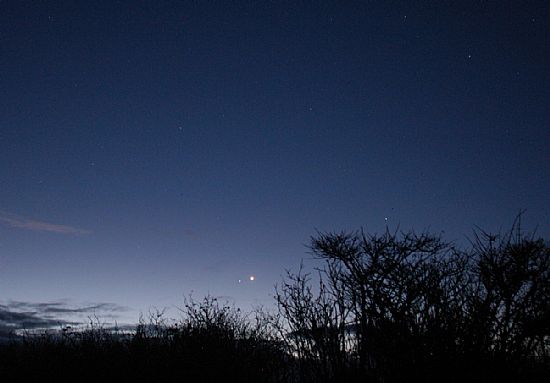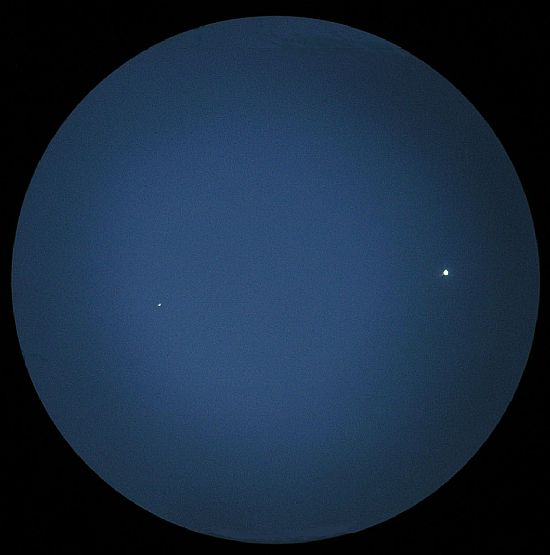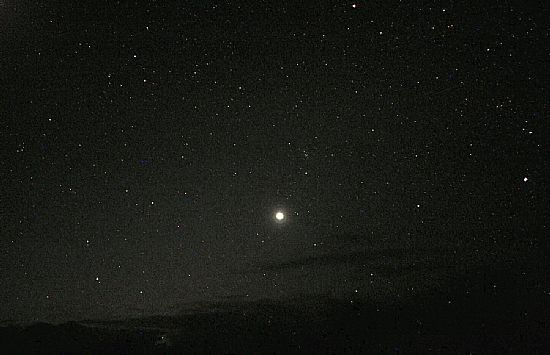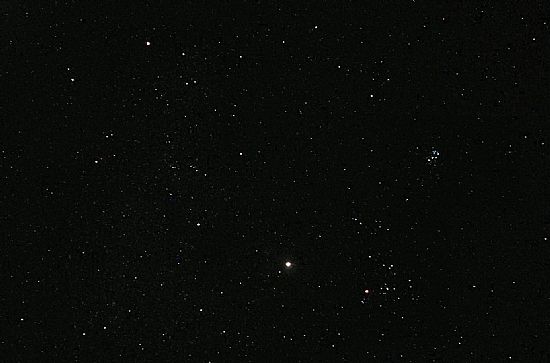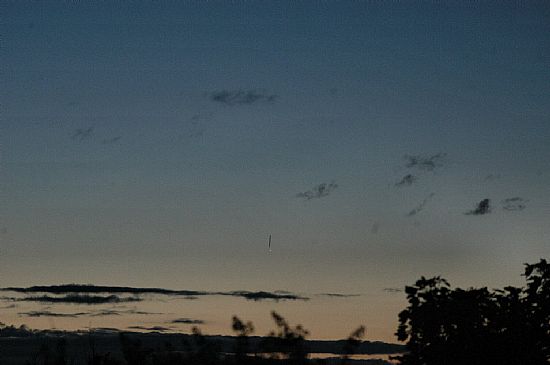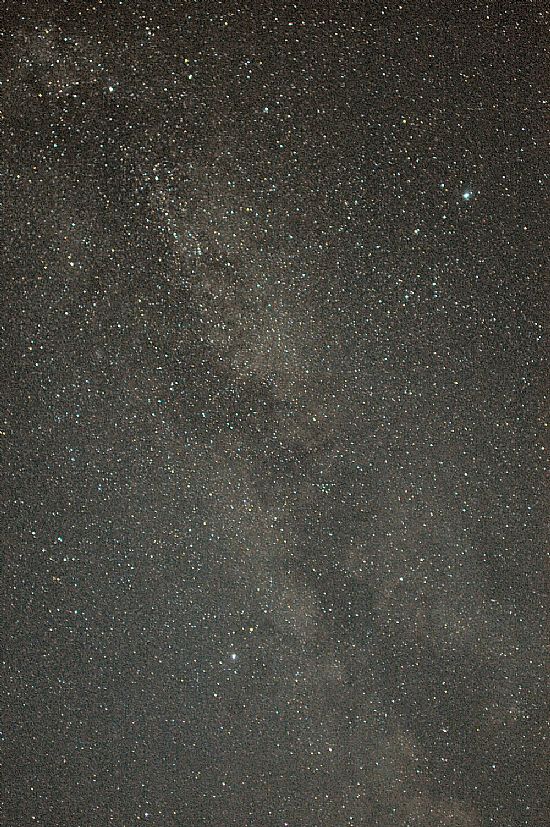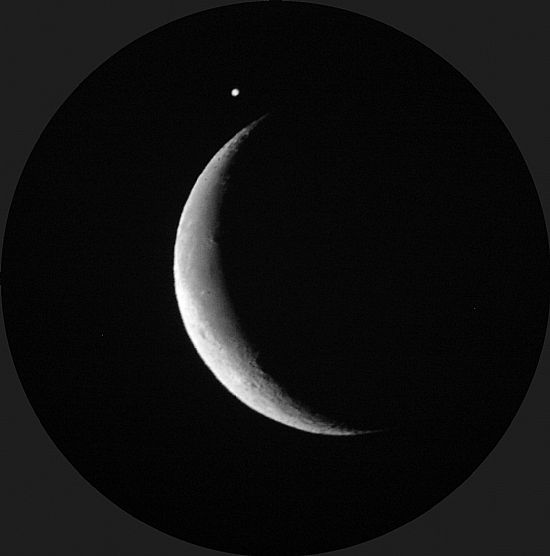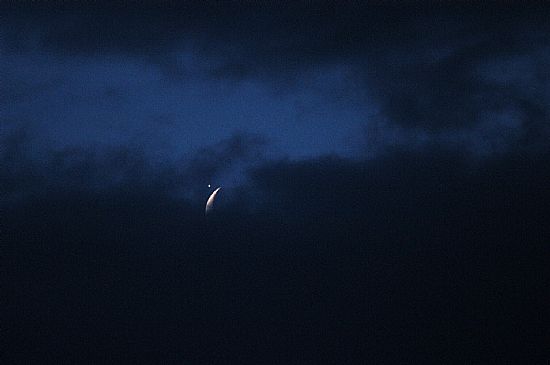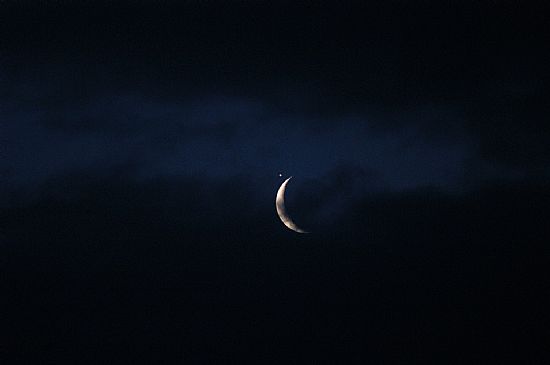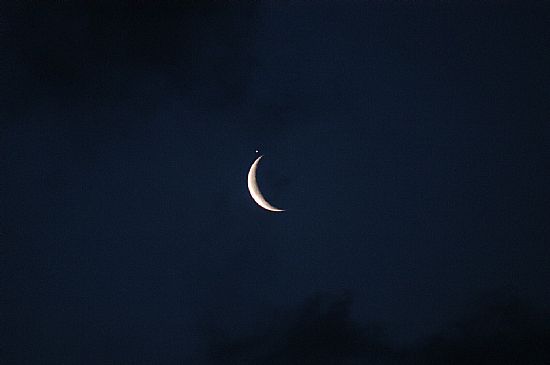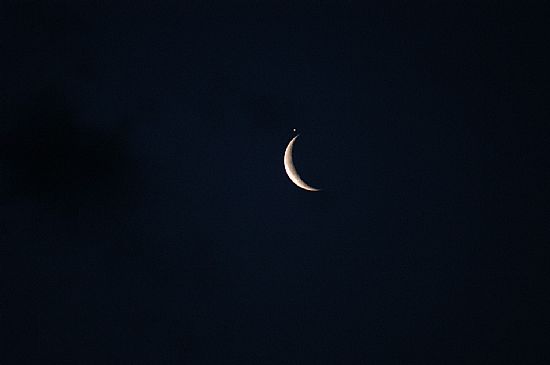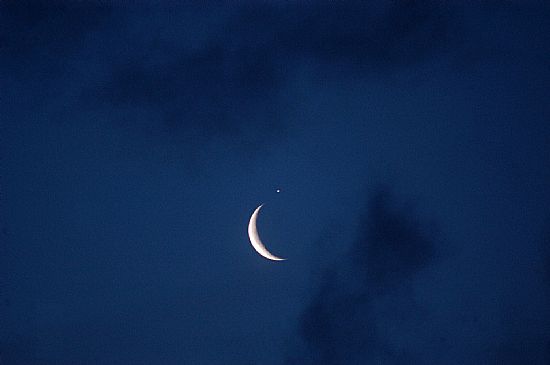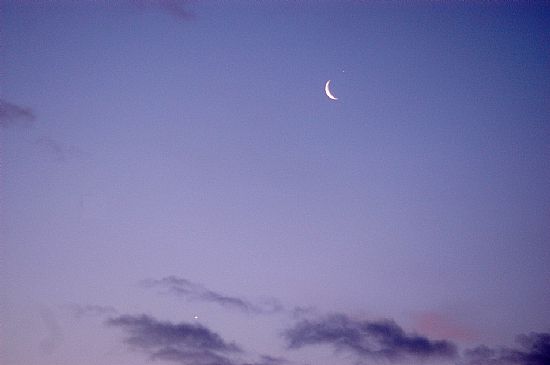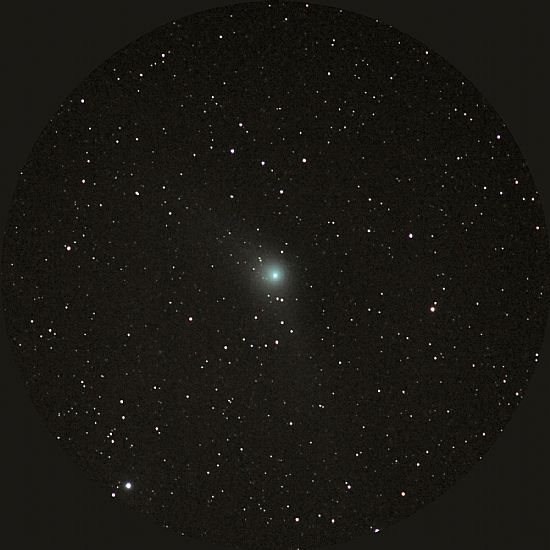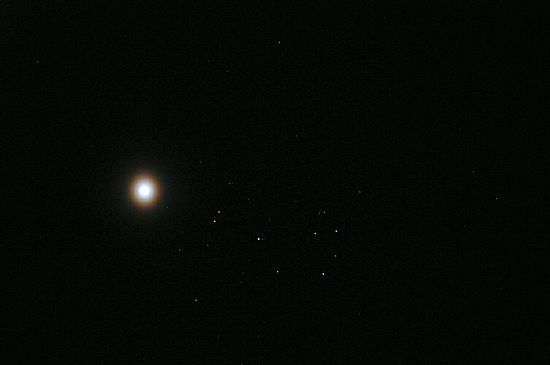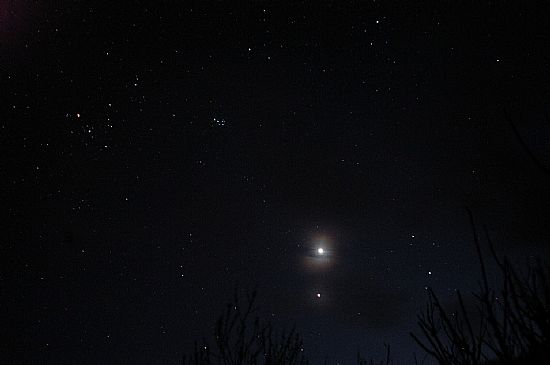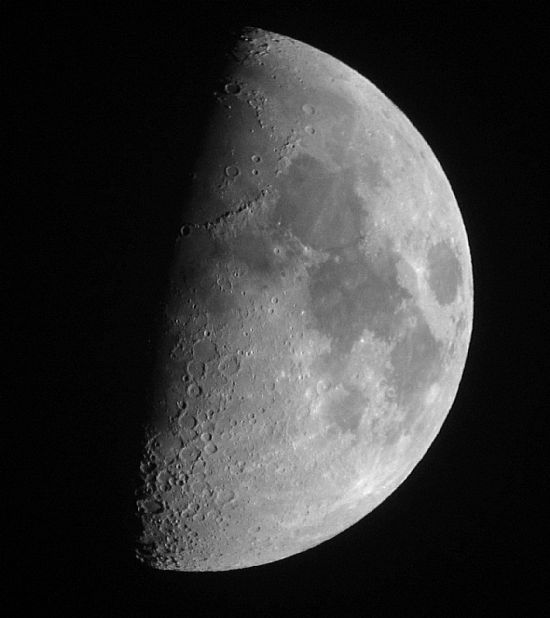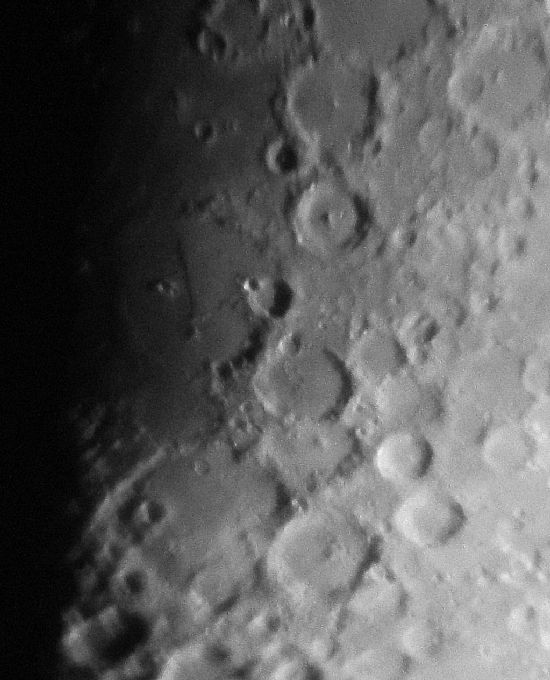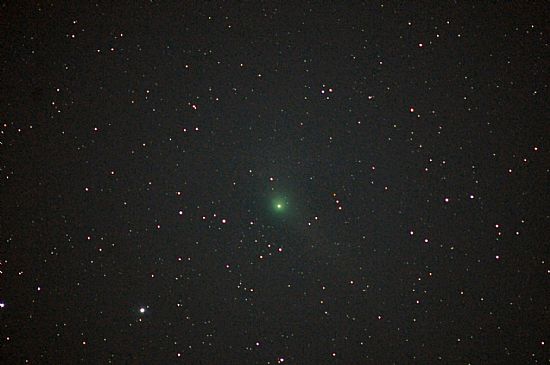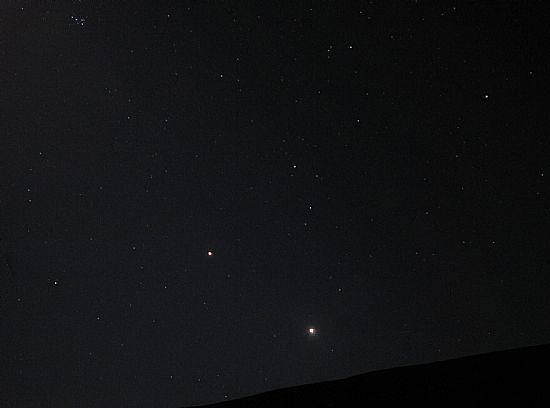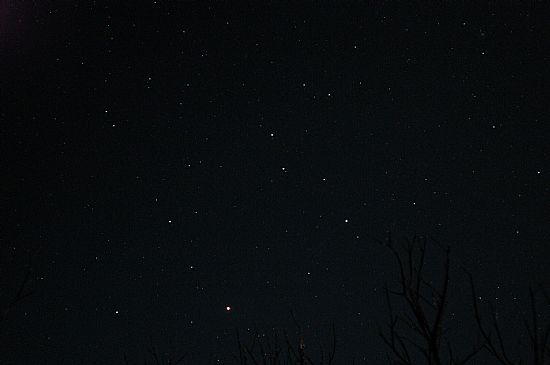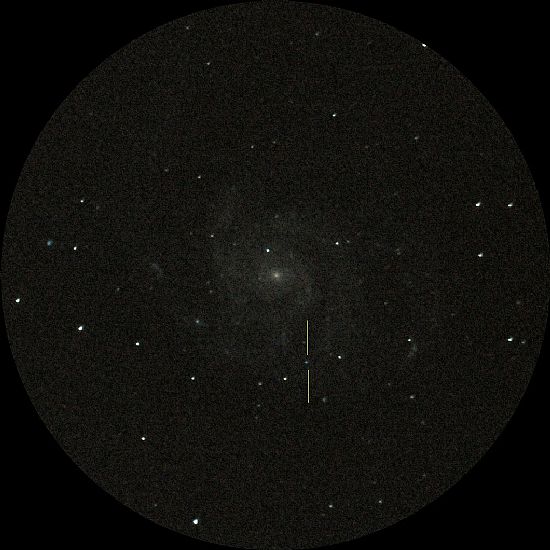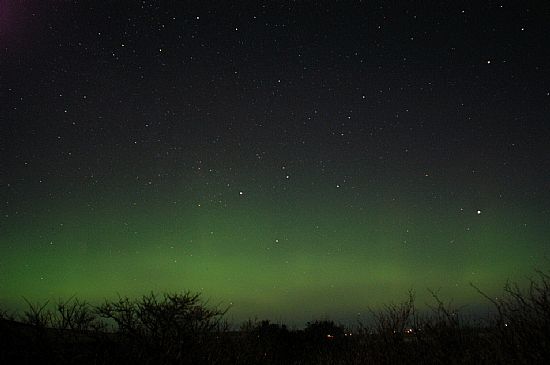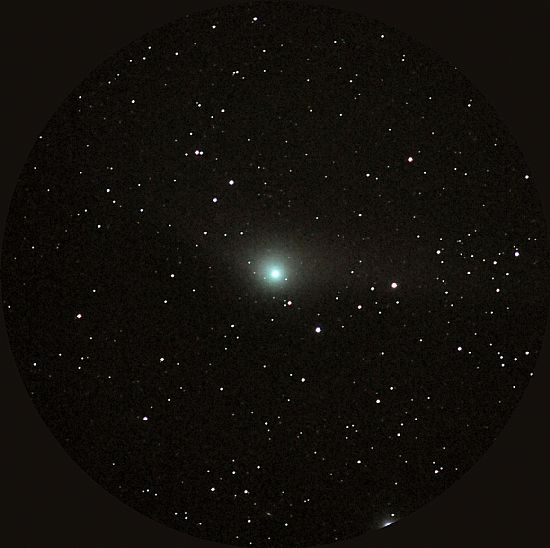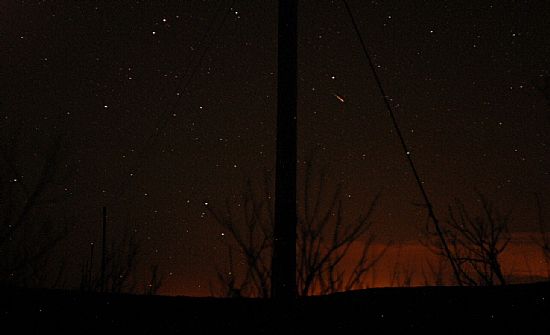 NORTHERN SKIES | sitemap | log in NORTHERN SKIES | sitemap | log in
|
 |
||
| This is a free Spanglefish 1 website. | ||
GALLERYLate Summer Twilight in the Northern Isles Plays Host to a Full Panoply of Celestial Events. An intense northern auroral glow fused with twilight through the late night and early morning (August 15/16) giving rise to an impressive display of rays and bands. This as backdrop to some brilliant meteors (including a fireball close in brilliance to a full moon), late members of the Perseid meteor shower that peeked in the early hours of 13th August. Exceptional atmospheric transparency meant that despite twilight and auroral activity the Milky Way could be seen spanning the sky from NE to SW. All this hampered, to some extent, work on Comet Lovejoy and scheduled observations of galaxies in constellation Draco—but you can't have it all ways! 2015 August 15: Looking a little west of north at 23h 18m UT. The stars of The Plough are well seen. 2015 August 16 00h 09m UT: The Milky Way imaged Nikkor 18mm f/3.5 and D100 SLR. A 102 sec. exposure, ISO 600. 2015 August 15 22h 46, UT: Comet C2014 Q2 Lovejoy imaged Nikkor 600m f/4, D800 SLR. A 37.8 sec. exposure ISO 2500.
2015 August 15 23h 13, UT: Galaxy NGC 5907. Nikkor 600mm f/4 with 2x converter. A 37.8 sec. 115 sec. exposure D 800 SLR, ISO 2500.
Conjunction of planets Mars, Venus and the "young", crescent Moon. (Note Earthshine on the Moon's dark surface.)
2015 February 20, 18h 15m UT. Nikkor 135mm f/2.8, D100 SLR 1/13 sec. ISO 800.
Large sunspot group, No. AR 2192.
2014 October 25, 10h 30m UT. 100mm achro (OGF)
2014 October 25, 10h 43m UT. 80mm apochro (OGF) 2014 September 28. The Andromeda Galaxy M31 IS still there! 2014 September 28, 22h 49m UT. A 53 sec. exposure Nikkor 500mm f/4, D300 SLR ISO 2000. (Left click to enlarge.) Invisible galaxy Sinking into soft armchairs for an evening with telly (With apologies to Dylan Thomas.) National Poetry Day The Early Morning Sky looking South 2014 March 26. The Early Morning Sky looking south 2014 March 26 at 04h UT. Nikkor 24mm f/2.8, D100 SLR ISO 500, A 20 sec. exposure. Light pollution from Kirkwall and Rousay Pier area. (Left click to enlarge.) From left to right (east to west) the brightest objects are: low down close to the “Hydro” pole, the super-giant, red star Antares (in Scorpius), planet Saturn (in Libra), planet Mars immediately above the white star Spica (in Virgo). 2014 February 26. Naked-eye Spectacular. A number of folk reported having seen Venus and the waning Moon in the early morning sky shortly before sunrise.
Imaged from Springfield looking SE at 06h 44m UT. Nikkor 210mm zoom D100 SLR. 2013 November 23: Mercury at Dawn. Lone messenger at dawn Standing in the dawn silence, Mercury’s light Coming upon him thus, through diligence, 2013 November 23 at 07h 01m UT. A 1/15th sec. exposure. 50mm f/1.4 Nikkor lens D100SLR ISO 500. Looking SSE from Springfield, Rousay. (Left click to enlarge.) Comet C/2011 L4 (PanSTARRS) We have been requested to show what we consider to be the finest image we have secured to date of Comet PanSTARRS. As can be seen from recent observations, the comet has now faded considerably since we first observed it on March 29. We have approximately 500 images of the comet taken with a wide range of lenses. It is significant that one of the finest was achieved on March 30th in twilight with the relatively inexpensive SkyWatcher 150mm aperture f/5 achromat, below: 2013 March 30, 20h 55m. 150mm f5 achromatic refractor. A 50 sec. exposure: D300 ISO 1600. The star to the left of the comet is TYC 2270-570-1 mag. 6.72. (Left click to enlarge.)
The Great Galaxy in Andromeda (M31) Comet C/2011 L4 (PanSTARRS) and a meteor captured in the frame 2013 April 03, 22h 07m UT.
Nikkor 200mm f/2. An 8 sec exposure, D300 ISO 1600.
The early morning sky 2012 December 02, looking south-east from Rousay (Springfield) at 07h 16m UT. 2012 December 02. From left to right: Mercury (mag-0.3), Venus in cloud (mag. –4.0) & Saturn (mag 0.6) also in cloud, in the morning sky 07h 16m UT: Nikkor 50mm f/1.8, D100 SLR ISO 500, exp. 1/5 sec. Mercury at Dawn I recall them saying to me, once, long ago, Copernicus, it is said, never saw it, JCV Cobbett’s Field (1997) ISBN 978-1-4343-5286-6 The early morning sky 2012 December 01, looking south-east from Rousay (Springfield) at 07h 20m UT. 2012 December 01, From left (low) to right: Mercury (mag-0.3), Venus (mag. –4.0) & Saturn (mag 0.6) in the morning sky 07h 20m UT: Nikkor 50mm f/1.8, D100 SLR ISO 500, exp. 1/6 sec. Those who have been following this series will be aware by now how rapidly the two inner planets (“inferior” planets) Mercury and Venus, move in relation to the star background and to each other. Venus will appear to move in on Mercury until around December 10, after which they will move apart. The three mornings of the 10,11,12 December will find the crescent Moon running just below the three planets. Look out for this interesting line up on the SKY VIEW page nearer the time. The other important feature to note is the rapid change in Mercury’s brightness from day to day. This will slow down by December 5, when Mercury’s magnitude will have reached –0.5, at which it will stick for three weeks. It is unlikely that we shall be able to observe the planet without optical aid in the morning sky much beyond the middle of December. Calculating Mercury’s apparent brightness is an interesting, mildly complicated exercise. The three determining factors are: distance from Earth, distance from Sun and phase. Since Mercury’s orbit is more eccentric than that of Venus’s, the farmer’s brightness is not the same for equal phases as it is with Venus. (Incidentally, all this has nothing to do with the traces of water recently detected on Mercury!) For more information see Sky Notes feature on the PLANETS page.
The early morning sky 2012 November 30, looking south-east from Rousay (Springfield) at 07h 24m UT. 2012 November 30 at 07h 22m UT. Mercury (mag. -0.0). Venus (mag. -4.0) and Saturn (mag. 0.6). Separations: Mercuy-Venus 9°. 40'; Venus-Saturn 2° 40';. Nikkor 50mm f/1.4 Nikon D100, 1/25 sec. exposure, ISO 500. (Left click to enlarge.)
The early morning sky 2012 November 28, looking south-east from Rousay (Springfield) at 07h 21m UT. 2012 November 28: Mercury (mag. 0.1), Venus (mag. –4.0) and Saturn (mag. 0.6) in the early morning sky at 07h 21m UT. The separation between Saturn and Venus is 1.5°. Mercury will be found low down to the east (left) at a distance of 10.5° from Venus. Imaged Nikkor 50mm f/1.4 Nikon D100, 1/25 sec. exposure, ISO 500. (Left click to enlarge.) The early morning sky 2012 November 27, looking south-east from Rousay (Springfield) at 07h 00m UT. Looking SSE at 07h 00m UT from Springfield, Rousay. From left to right: Mercury (low down above arrow), Venus with Saturn above, and Spica - far right. (Left click to enlarge.) The early morning sky 2012 November 26, looking south-east from Rousay (Springfield) at 07h 04m UT. Venus preparing to rendezvous with Saturn. Imaged 2012 November 26 at 07h 04m UT. From left to right: Saturn (mag. 0.6), Venus (mag. –4.0) and Spica (principle star in the constellation Virgo, mag. 1.0 var.) Separations at time of observation: Saturn-Venus 59' 57" Venus-Spica 11° 50'. Mercury at this time was above the horizon to the east at an elevation of a little under 3° and at exactly the same magnitude as Saturn, but hidden by a bank of cloud. Mercury appeared above the cloud 30 minutes later but was only visible in binoculars by this time due to strong twilight. (Left click to enlarge.) Saturn and Venus imaged with 100mm apochromatic f/9 refractor 2012 11 26 at 07h 48m UT. (Left click to enlarge.) THE END OF SUMMER! The early morning sky 2012 September 19, looking east from Rousay (Springfield) at 03h 40m UT. Venus with Leo rising (left), "Beehive" star cluster in Cancer above (right), Pollux (top), Procyonj (right). Static camera: 15 sec. exposure, D100 SLR ISO 500. (Left click to enlarge.) Jupiter in Taurus. early morning sky 2012 September 19, looking east at 03h 39m UT. Jupiter with Aldebaran (right), Pleiades cluster (above right), Capella (top left) Static camera: 15 sec. exposure, D100 SLR ISO 500. (Left click to enlarge.)
Mercury in the morning sky 2012 August 18. Merciry: 2012 August 18, 03h 24m UT. Nikkor 105mm f/4, D100 SLR, 1/20 sec. ISO 500. The planet may be seen below the verticle, black line lower centre. (Left click to enlarge.)
The Milky Way: Late Evening 2012 August 11.
The Milky Way: 2012 August 11, 23h 05m UT. A 55 sec. exposure. Nikkor 24mm f/2.8, ISO 600. D100 SLR. The conjunction between Jupiter and the waning Moon in the early hours of 2012 July 15.
2012 July 15, 02h 09m UT. 100mm achromat. 45x Minolta Dimage F200 1/40 sec. ISO 400.
July 15, 2012, 02h 00m: Nikkor 300mm f/4.5 and Nikon D100 SLR 1/20 sec. ISO 500.
July 15, 2012, 02h 00m UT: Nikkor 300mm f/4.5 and Nikon D100 SLR 1/20 sec. ISO 500.
July 15, 2012, 02h 05m UT: Nikkor 300mm f/4.5 and Nikon D100 SLR 1/20 sec. ISO 500.
July 15, 2012, 02h 06m UT: Nikkor 300mm f/4.5 and Nikon D100 SLR 1/20 sec. ISO 500.
July 15, 2012, 02h 27m UT: Nikkor 300mm f/4.5 and Nikon D100 SLR 1/20 sec. ISO 500. July 15, 2012, 02h 56m UT: Nikkor 50mm f/1.4 and Nikon D100 SLR 1/250 sec. ISO 500. Showing Jupiter, Moon Above, right) with Venus (lower left). [Left click to enlarge.]
Splendours of the Natural Sky Comet Garradd imaged 2012 January 27, 05h 01m. Much against my better judgment I agreed to appear on a recent programme in the “Call Kaye” series from BBC Radio Scotland. Kaye was quite open in admitting she was not much turned on by cosmological space and wanted to know what use it all might be for the “ordinary” person. At one stage I was asked what had been the most spectacular object I had seen in a telescope. I returned the question to the first point by asking what use anything might be to a species that appeared intent on destroying the planet in its quest for success! I suggested some knowledge as to our place in the greater scheme of things might give a sense of proportion and to not take ourselves too seriously. To the second question I had to admit that as a very young lad my first sighting of Saturn in a small telescope took some beating. But then some of the most spectacular stuff may be enjoyed without any equipment whatsoever and I mentioned Comet Hyakutake of 1996 with its "head" in the zenith and a tail stretching almost to the horizon, as viewed from Orkney on March 30 that year. Other naked eye spectaculars would include the Leonid meteor shower in full flow or the experience of an aurora from an open boat on a flat sea when the splendours of sky were reflected in the water giving one the sense of floating in interstellar space.
Venus "passing" the Pleiades 2012 April 04.
Venus appearing close to the Pleiades open cluster. Imaged 2012 April 4 at 20h 26m UT. Nikkor 300mm f/4.5. D100 SLR, 1 sec. exposure ISO.400 (static camera) in a hazy sky. Alcyone at visual apparent magnitude of 2.8 (the brightest star in the cluster) is outshone by Venus (mag. –4.4) approximately 800 fold. Jupiter & Venus Conjunction March 2012. The Western Evening Sky March 17 at 8 pm. (Left click to enlarge.) The view as seen from Springfield, Rousay. Venus with Jupiter below struggling against transient cloud. The two principle stars of Aries are to be seen to the immediate right. The Pleiades Cluster (looking like a miniature Plough” with part of the handle missing), above left, with further to the left the bright, red super-giant star Aldebaran (eye of the Bull) in the open Hyades Cluster. A 15 sec exposure Nikkor 24mm f/2.8 and D100 SLR ISO 500. Sample of observations (images) made 2012 March 01, 17h 58m UT to March 02, 04h 21m UT. The night was of moderate transparency but variable, sometimes poor, seeing. This limited lunar and planetary observations in terms of high magnification (at times even with the 132mm f/7 triplet the equatorial bands on Jupiter were scarcely visible and Mars with the same instrument showed no markings—not so much as a single polar cap! Moon at 17h 58m UT. 132mm f/7 apochromatic triplet Canon IXUS 310 HS DC. (Left click image to enlarge.)
Moon at 18h 09m UT. 132mm f/7 apochromatic triplet Canon IXUS 310 HS DC showing the Straight Wall (Rupes Recta) on the terminator.
Comet Garradd at 20h 30m UT. Nikkor 600mm f/4. D300 SLR ISO 1600. Exposure limited to 30 sec. due to sky illumination from auroral glow and moonlight. Jupiter and Venus over Knitchin Hill, Rousay at 20h 36m UT. Static camera D100 SLR and 24mm f/2.8 Nikkor lens. A 10 sec exposure. (Note Pleiades Cluster top left.) By this time Mercury was hidden by the hill but was readily visible from the other side of the island. (Left click image to enlarge.) Mars (lower left) in Leo looking east from Springfield at 20h 09m UT. Data as for Jupiter and Venus. (Left click image to enlarge.)
M101 showing the much reduced super nova indicated between the two yellow lines imaged at 21h 26m UT. The “bright” star appearing close to the centre of the galaxy (not part of the galaxy as is the nova) is GSC 3852-1012 mag. 12.67. The star immediately below the nova is GSC 3852-817 mag. 15.25. 200mm f/8 Ritchey Chretien. A 50 sec. exposure D300 SLR ISO 1600. Looking a little west of due north at 21h 58m. The two brightest stars in the field are Deneb in the tail of the Swan (Cygnus) and Vega, the second brightest star in the northern hemisphere and the fifth brightest in the entire sky. Data as for Jupiter and Venus etc. (Left click image to enlarge.)
Comet Garradd imaged in the early morning of March 02 at 03h 59m UT (moonset 03h 53mUT). Nikkor 600mm f/4. D300 SLR ISO 1600. Exposure limited to 70 sec. due to sky illumination from auroral glow. Looking a little east of due south at 04h 21m UT with the constellation Scorpius partially above the horizon. The super-giant red star Antares is close to the visible horizon (lower left) entangled with the trees. A “Hydro” pole is the central feature! Note the short meteor trail between the pole and the stay: heavy light pollution from the region of Kirkwall and Rousay jetty. Data as for Jupiter and Venus. (Left click image to enlarge.)
|    |
|
 | ||


















